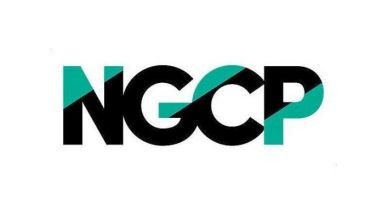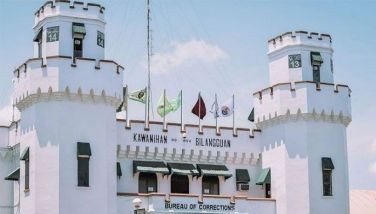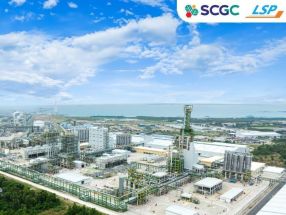Asean members agree to curb pesticide use in fruits, vegetables
October 14, 2002 | 12:00am
Exporters of fruits and vegetables using pesticides at levels exceeding tolerable limits will soon find themselves out of business in Southeast Asia.
The Philippines, along with the 10-member nations of the Association of Southeast Asian Nation (ASEAN) agreed to curb pesticide use in certain fruits and vegetables to ensure food produced within the region and those exported are safe for human consumption.
At the 24th meeting of the ASEAN Ministers of Agriculture and Forestry in Vientiane, Laos, Philippine Agriculture Secretary Leonardo Montemayor said ASEAN members agreed to harmonize the maximum residue limits (MRLs) of seven pesticides used on different vegetables grown throughout the region.
The chemicals involved are generally considered moderately hazardous pesticides like acephate, chlorothalonil, deltamethrin, fenthion, fenvalerate, methidathion and profenofos.
"By harmonizing MRLs, we are sending a signal to farmers in the ASEAN region that excessive use of pesticides is not only dangerous to health, it is also costly as farmers are risking huge economic losses when their crops are quarantined and banned because they contain high chemical residue levels," Montemayor said.
Of the seven chemicals, some 94 MRLs were harmonized and to date, the total number of maximum residue levels harmonized by the regional bloc has reached 264, involving 20 pesticides.
At the Vientiane meeting, ASEAN countries also agreed to review nine other pesticides, including carbosulfan, dichlorvos, fenpropathin, metalaxyl, crymazine, benomyl, phosphamidon, dicofol and captan, for the possible harmonization of their MRLs.
Most of the MRLS harmonized by the group are not yet included in the internationally-recognized food guide called Codex Alimentarious from which all countries rely on to determine how much pesticide found in various types of food are deemed within safe limits.
In the absence of certain MRLS of pesticides in fruits and vegetables from the Codex, fWarmers in Southeast Asia developed the habit of using agricultural chemicals at excessive levels, often with disastrous results.
In recent months, Japan, a major importer of fruits and vegetables, have issued stern warning to its suppliers that it would ban products determined by its health authorities to be contaminated with chemicals that exceeded acceptable limits.
Worse, the ban will not be confined to the contaminated commodities, but it will be imposed on all exporters from the country where such products originated.
The Philippines, along with the 10-member nations of the Association of Southeast Asian Nation (ASEAN) agreed to curb pesticide use in certain fruits and vegetables to ensure food produced within the region and those exported are safe for human consumption.
At the 24th meeting of the ASEAN Ministers of Agriculture and Forestry in Vientiane, Laos, Philippine Agriculture Secretary Leonardo Montemayor said ASEAN members agreed to harmonize the maximum residue limits (MRLs) of seven pesticides used on different vegetables grown throughout the region.
The chemicals involved are generally considered moderately hazardous pesticides like acephate, chlorothalonil, deltamethrin, fenthion, fenvalerate, methidathion and profenofos.
"By harmonizing MRLs, we are sending a signal to farmers in the ASEAN region that excessive use of pesticides is not only dangerous to health, it is also costly as farmers are risking huge economic losses when their crops are quarantined and banned because they contain high chemical residue levels," Montemayor said.
Of the seven chemicals, some 94 MRLs were harmonized and to date, the total number of maximum residue levels harmonized by the regional bloc has reached 264, involving 20 pesticides.
At the Vientiane meeting, ASEAN countries also agreed to review nine other pesticides, including carbosulfan, dichlorvos, fenpropathin, metalaxyl, crymazine, benomyl, phosphamidon, dicofol and captan, for the possible harmonization of their MRLs.
Most of the MRLS harmonized by the group are not yet included in the internationally-recognized food guide called Codex Alimentarious from which all countries rely on to determine how much pesticide found in various types of food are deemed within safe limits.
In the absence of certain MRLS of pesticides in fruits and vegetables from the Codex, fWarmers in Southeast Asia developed the habit of using agricultural chemicals at excessive levels, often with disastrous results.
In recent months, Japan, a major importer of fruits and vegetables, have issued stern warning to its suppliers that it would ban products determined by its health authorities to be contaminated with chemicals that exceeded acceptable limits.
Worse, the ban will not be confined to the contaminated commodities, but it will be imposed on all exporters from the country where such products originated.
BrandSpace Articles
<
>
- Latest
- Trending
Trending
Latest
Trending
Latest
Recommended



























